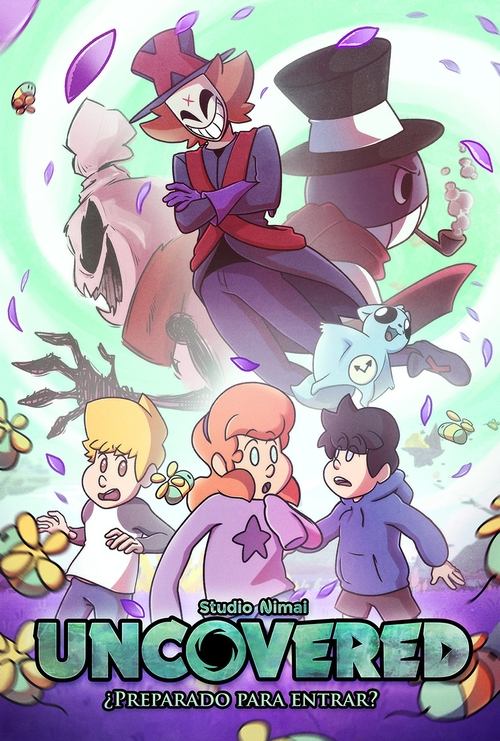
Ask Your Own Question
What is the plot?
In the opening scene of "Everyday Matilda," we are introduced to Matilda, a young girl living in the small town of Paper Port. The camera pans over the quaint streets, showcasing the vibrant community and its colorful houses. Matilda is seen walking to school, her backpack bouncing with each step. She is cheerful but slightly anxious about the day ahead, as she has a presentation to give in class. Her internal monologue reveals her desire to impress her classmates and her teacher, Ms. Thompson.
As Matilda arrives at school, she is greeted by her friends, who are excitedly discussing the upcoming school fair. The atmosphere is lively, but Matilda feels a twinge of insecurity as she overhears some classmates talking about their own presentations. She takes a deep breath, reminding herself to stay confident. The bell rings, and they all rush to their classroom.
In the classroom, Ms. Thompson encourages the students to present their projects. Matilda is called up first. As she stands in front of her peers, she fumbles with her notes, her hands shaking slightly. Despite her nerves, she begins to speak passionately about her project on local wildlife. However, midway through, she stumbles over her words, and a few classmates snicker. This moment of embarrassment causes her to lose her train of thought, and she quickly finishes her presentation, feeling defeated.
After class, Matilda retreats to the schoolyard, where she sits alone on a swing. Her friend, Lily, approaches her, trying to cheer her up. Matilda expresses her disappointment in herself, feeling that she let everyone down. Lily encourages her to not give up and suggests they work on a new project together for the school fair. Matilda hesitates but eventually agrees, feeling a spark of hope.
Later that evening, Matilda is at home, sitting at her desk surrounded by art supplies. She begins brainstorming ideas for the fair project with Lily over a video call. They decide to create a large mural that represents the beauty of Paper Port. Matilda feels a renewed sense of purpose and excitement as they discuss their plans, her creativity flowing freely.
The next day, Matilda and Lily gather materials and start working on the mural in the school art room. They spend hours painting, laughing, and sharing stories. As they work, Matilda opens up about her fears of not being good enough, and Lily reassures her that everyone has their struggles. This moment deepens their friendship, and Matilda feels a sense of belonging.
As the school fair approaches, Matilda becomes increasingly anxious about the mural's completion. They face challenges, such as running out of paint and needing to find creative solutions. Matilda's determination grows, and she takes the lead in problem-solving, showcasing her leadership skills. The duo works late into the night, fueled by pizza and their shared enthusiasm.
On the day of the school fair, the atmosphere is electric. The school is filled with colorful booths and excited families. Matilda and Lily unveil their mural, which is a stunning representation of Paper Port's landscape, complete with vibrant colors and intricate details. The crowd gathers, admiring their work. Matilda feels a rush of pride as compliments pour in from teachers and parents alike.
As the fair continues, Matilda is approached by Ms. Thompson, who praises the mural and encourages Matilda to keep pursuing her artistic talents. This validation boosts Matilda's confidence, and she realizes that her earlier embarrassment was just a stepping stone to growth. The episode concludes with Matilda and Lily celebrating their success, surrounded by friends, as they enjoy the festivities of the fair, solidifying their bond and Matilda's newfound self-assurance.
What is the ending?
In the ending of "Everyday Matilda," Matilda finally confronts her fears and insecurities, leading to a moment of self-acceptance. She stands up to her bullies and embraces her unique qualities, which inspires her friends to do the same. The episode concludes with a sense of unity among the characters, as they celebrate their individuality and the strength found in friendship.
As the episode draws to a close, the scene shifts to Matilda standing in front of her classmates, her heart racing as she prepares to speak. The classroom is filled with a mix of anticipation and skepticism; her peers have often dismissed her as an outsider. The camera captures her trembling hands and the way she bites her lip, revealing her internal struggle.
In this moment, Matilda takes a deep breath, her mind racing with memories of the bullying she has faced. She recalls the hurtful words and the laughter that followed her every misstep. But instead of retreating into her shell, she channels her emotions into her speech. With a quiver in her voice, she begins to share her story, detailing her experiences and the pain of feeling different. The room falls silent, and the tension is palpable as her classmates listen intently.
As she speaks, the camera pans to her friends, who are seated nearby. They exchange glances, their expressions shifting from uncertainty to admiration. Matilda's courage ignites something within them, and one by one, they begin to nod in agreement, feeling empowered by her words. The atmosphere in the room transforms; the once skeptical classmates start to see Matilda not as an outsider, but as someone who embodies resilience.
The scene transitions to a montage of Matilda and her friends engaging in various activities together, showcasing their unique talents and quirks. They are seen painting, dancing, and laughing, each moment highlighting their individuality. The vibrant colors and joyful music underscore the newfound sense of belonging they all feel.
In the final moments, the camera focuses on Matilda, who is now surrounded by her friends, all of them smiling and celebrating their differences. The once lonely girl has found her place, and the bond they share is palpable. The episode ends with a shot of Matilda looking out at the horizon, a look of determination on her face, symbolizing her journey of self-acceptance and the strength of friendship.
As the credits roll, viewers are left with a sense of hope and the message that embracing one's true self can lead to empowerment and connection with others. Each character, including Matilda, has grown through their experiences, learning the importance of acceptance and the power of unity in the face of adversity.
Is there a post-credit scene?
In the episode "Everyday Matilda" from the show Paper Port, there is indeed a post-credit scene. After the main credits roll, the scene opens with a quiet, dimly lit room filled with stacks of papers and colorful art supplies scattered around. The camera slowly pans to a desk where Matilda, the protagonist, is seen doodling in her sketchbook, her brow furrowed in concentration.
As she sketches, the sound of a door creaking open interrupts her focus. Matilda looks up, her expression shifting from concentration to surprise. The camera cuts to reveal her best friend, Leo, peeking in with a mischievous grin. He holds up a large, crumpled piece of paper, which he dramatically unfurls to reveal a wild, imaginative drawing of a fantastical creature that seems to leap off the page.
Matilda's eyes widen with excitement, and she bursts into laughter, her earlier tension melting away. Leo, encouraged by her reaction, begins to animate the creature with exaggerated movements, making it dance around the room. The scene captures a moment of pure joy and creativity, highlighting the bond between the two friends.
As the laughter echoes, the camera zooms in on Matilda's sketchbook, where she quickly jots down ideas inspired by Leo's drawing. The scene ends with a close-up of her determined expression, hinting at her desire to bring her own imaginative ideas to life, setting the stage for future adventures. The screen fades to black, leaving viewers with a sense of anticipation for what's to come in the series.
What motivates Matilda to take on the challenges she faces in her everyday life?
Matilda is driven by a deep desire for independence and self-identity. She feels constrained by her mundane surroundings and seeks to break free from the monotony of her daily routine. Her internal struggle is highlighted through her interactions with her family and friends, as she grapples with the expectations placed upon her.
How does Matilda's relationship with her family influence her actions throughout the episode?
Matilda's relationship with her family is complex; she feels misunderstood and often overshadowed by her siblings. This dynamic fuels her determination to assert herself and pursue her own interests, leading to moments of conflict and emotional turmoil as she seeks validation and support from her parents.
What specific events lead to Matilda's moment of self-discovery in this episode?
Throughout the episode, Matilda experiences a series of small yet significant events, such as a confrontation with a school bully and a heartfelt conversation with a close friend. These moments culminate in a pivotal scene where she stands up for herself, marking a turning point in her journey towards self-acceptance and empowerment.
How do the supporting characters contribute to Matilda's development in this episode?
Supporting characters, such as her best friend and her siblings, play crucial roles in Matilda's development. They provide contrasting perspectives on her struggles, with her friend encouraging her to embrace her uniqueness, while her siblings often dismiss her feelings. These interactions challenge Matilda to reflect on her own identity and choices.
What role does the setting of Paper Port play in shaping Matilda's experiences?
The setting of Paper Port is integral to Matilda's experiences, as it represents both a physical and emotional landscape of her life. The quaint yet confining environment amplifies her feelings of entrapment, while also serving as a backdrop for her adventures and self-exploration. The vibrant community around her contrasts with her internal struggles, highlighting her quest for belonging.
Is this family friendly?
"Paper Port," season 1, episode 1 titled "Everyday Matilda," is generally considered family-friendly. However, there are a few scenes and aspects that might be potentially objectionable or upsetting for children or sensitive viewers:
-
Emotional Conflict: The episode features moments of emotional tension between characters, which may be intense for younger viewers. These conflicts can evoke feelings of sadness or anxiety.
-
Mild Frustration: Characters experience frustration and disappointment in their daily lives, which could resonate with children who may find such emotions difficult to process.
-
Themes of Loneliness: The episode touches on themes of isolation and the desire for connection, which might be upsetting for sensitive viewers who relate to these feelings.
-
Mild Scares: There are moments that may include mild suspense or unexpected events that could startle younger children.
Overall, while the show is designed for a family audience, these elements may require parental guidance for younger viewers.




















